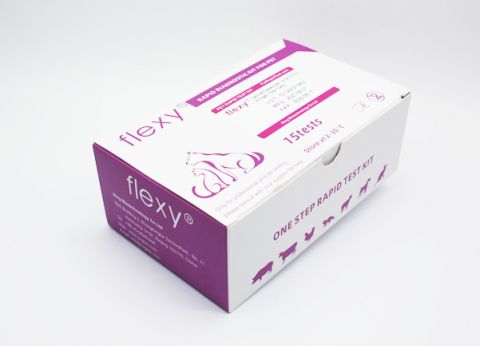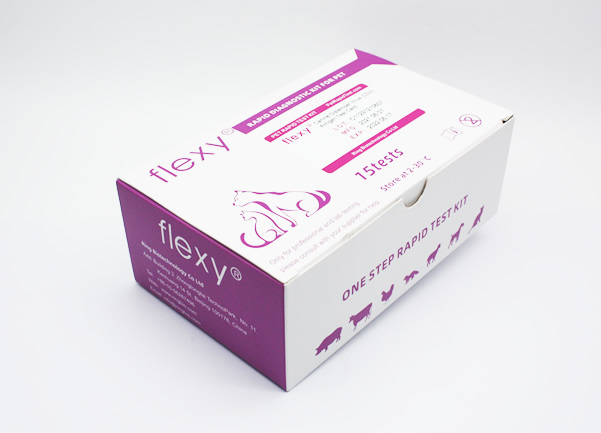
The Canine Distemper Virus Real-time PCR test, CDV RT-PCR Test is to detect canine distemper virus (CDV) antigen in nose mucus, saliva, conjunctiva secreta and blood, which is rapid, accurate and easy-to-operate. Sensitivity 100%, Specificity 100%, GMP certified.
Basic information
CDV is highly contagious and commonly travels between hosts through the aerosols emitted when dogs bark and cough and through urine and feces. The disease starts with respiratory symptoms, such as coughing and pneumonia, and progresses into gastrointestinal illness and neurological problems. Most dogs in the United States receive vaccines for CDV to protect against native North American strains..
Key facts of the Canine Distemper Virus Real-time PCR test
- Ready to use kits for vet clinic
- No extraction required
- Result in 30min.
Canine Distemper Virus Real-time PCR test Components
| Item # | Item | Qty |
|---|---|---|
| 1 | PCR reaction solution | 120ul |
| 2 | Negative Control | 50ul |
| 3 | Positive Control | 50ul |
| 4 | Exogenous Gene Control | 50ul |
| 5 | Sample buffer | 1ml |
| 6 | Enzyme mix | 10ul |
| 7 | Kit user manual | 1set |
What are the symptoms of canine distemper?
Initially, infected dogs will develop watery to pus-like discharge from their eyes. They then develop fever, nasal discharge, coughing, lethargy, reduced appetite, and vomiting. As the virus attacks the nervous system, infected dogs develop circling behavior, head tilt, muscle twitches, convulsions with jaw chewing movements and salivation (“chewing gum fits”), seizures, and partial or complete paralysis. The virus may also cause the footpads to thicken and harden, leading to its nickname “hard pad disease.”
In wildlife, infection with canine distemper closely resembles rabies. Distemper is often fatal, and dogs that survive usually have permanent, irreparable nervous system damage.
How is canine distemper diagnosed and treated?
Veterinarians diagnose canine distemper through clinical appearance and laboratory testing. There is no cure for canine distemper infection. Treatment typically consists of supportive care and efforts to prevent secondary infections; control vomiting, diarrhea and neurologic symptoms; and combat dehydration through administration of fluids. Dogs infected with canine distemper be separated from other dogs to minimize the risk of further infection.
How is canine distemper prevented?
Vaccination is crucial in preventing canine distemper.
-
A series of vaccinations is administered to puppies to increase the likelihood of building immunity when the immune system has not yet fully matured.
-
Avoid gaps in the immunization schedule and make sure distemper vaccinations are up to date.
-
Avoid contact with infected animals and wildlife
-
Use caution when socializing puppies or unvaccinated dogs at parks, puppy classes, obedience classes, doggy day care and other places where dogs can congregate.
-
Pet ferrets should be vaccinated against canine distemper using a USDA-approved ferret vaccine.
Extended reading
- Canine distemper virus (CDV), Cornell University




